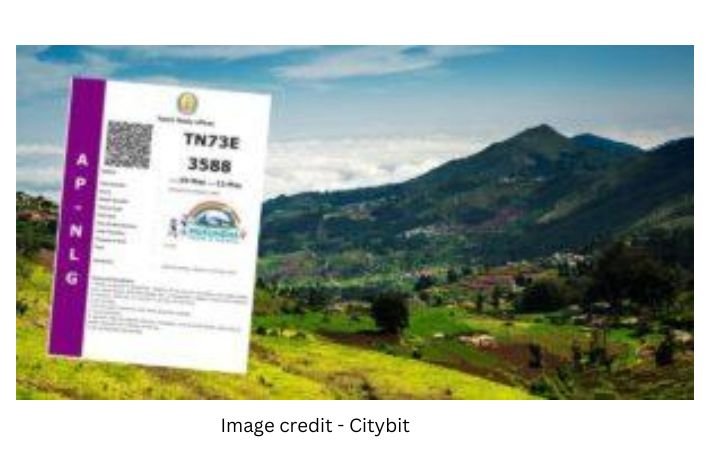Introduction
The introduction of the e-pass system in popular hill stations like Ooty and Kodaikanal has led to significant delays and long queues at check posts, causing frustration among tourists and locals alike. The new digital permit system, aimed at regulating tourist inflow and ensuring environmental sustainability, has faced teething problems, including technical glitches, lack of awareness, and inadequate infrastructure. This report explores the reasons behind the congestion, the impact on travelers, and potential solutions to streamline the process.
Background of the E-Pass System
Ooty (Udhagamandalam) and Kodaikanal, two of Tamil Nadu’s most sought-after hill stations, have been grappling with overtourism, leading to environmental degradation, traffic congestion, and strain on local resources. To address these issues, the Tamil Nadu government introduced an e-pass system for vehicles entering these regions, similar to systems implemented in other ecologically sensitive areas like Munnar in Kerala.
Objectives of the E-Pass System
Under this system, tourists must obtain an online permit before entering Ooty or Kodaikanal. The e-pass is meant to:
- Control tourist inflow during peak seasons.
- Reduce traffic congestion and pollution.
- Protect fragile ecosystems from over-exploitation.
However, the rollout has been far from smooth, with long queues forming at check posts due to verification delays and technical issues.
Reasons for Long Queues at Check Posts
1. Lack of Awareness Among Tourists
Many travelers, especially those from neighboring states like Karnataka and Kerala, were unaware of the new e-pass requirement. Upon reaching the check posts, they were turned back or forced to apply on the spot, leading to delays.
2. Technical Glitches in the Online Portal
The government’s e-pass portal faced server crashes and slow processing times due to high demand, particularly on weekends and holidays. Tourists reported difficulties in uploading documents and receiving instant approvals.
3. Insufficient Staff and Infrastructure at Check Posts
The check posts were not adequately equipped to handle the sudden surge in manual verifications. With only a few officials managing hundreds of vehicles, the verification process became sluggish, causing kilometer-long tailbacks.
4. Last-Minute Applications
A large number of tourists applied for e-passes at the last minute, assuming it would be a quick process. However, delays in approval led to bottlenecks at entry points.
5. Resistance from Local Taxi and Bus Operators
Many private taxi and bus operators were not properly informed about the new rules. Some drivers refused to comply, arguing that the system was causing financial losses due to delays.
Impact on Tourists and Local Businesses
1. Frustration Among Tourists
Families traveling with children and elderly members were particularly affected, as they had to wait for hours under the sun. Some tourists canceled their trips midway after facing excessive delays.
2. Loss of Business for Hotels and Shops
Local businesses reported a drop in footfall, as many tourists either postponed their visits or left early due to the chaos. Restaurant and hotel owners expressed concerns over declining revenues during what should have been a peak season.
3. Increased Traffic Congestion
The long queues at check posts spilled over onto main roads, disrupting normal traffic flow. Residents complained of being unable to commute smoothly due to the gridlock.
4. Negative Publicity on Social Media
Disgruntled tourists took to social media to share their experiences, posting images and videos of the long waits. This negative publicity could deter future visitors if the issue is not resolved quickly.
Government Response and Measures Taken
1. Increasing Staff at Check Posts
Additional personnel were deployed to speed up manual verification for those who had not obtained e-passes in advance.
2. Improving the E-Pass Portal
The online system was upgraded to handle higher traffic, reducing crashes and processing delays. Authorities also introduced SMS-based confirmations to ease last-minute applications.
3. Public Awareness Campaigns
The tourism department launched campaigns on social media, radio, and highway signboards to inform travelers about the mandatory e-pass requirement.
4. Introducing Offline Application Options
For tourists without internet access, offline application counters were set up at key locations before the check posts.
5. Staggered Entry Slots
To avoid overcrowding, the government considered implementing time-slot bookings, allowing only a limited number of vehicles per hour.
Suggestions for a Smoother Implementation
While the e-pass system is a step in the right direction for sustainable tourism, its execution needs refinement. Here are some suggestions:
1. Pre-Booking Incentives
- Offer discounts on toll fees or parking for those who apply at least 48 hours in advance.
- Provide priority lanes for pre-registered vehicles at check posts.
2. Mobile App Integration
- Develop a dedicated tourism app where travelers can apply for e-passes, check real-time queue status, and receive alerts.
3. Better Coordination with Transport Operators
- Conduct workshops for taxi and bus associations to ensure compliance.
- Introduce bulk e-pass approvals for tour operators.
4. Seasonal Flexibility
- Increase the daily vehicle cap during off-season months to support local businesses.
- Implement dynamic pricing, charging higher fees during peak weekends.
5. Enhanced Infrastructure
- Expand check post lanes and install RFID scanners for faster verification.
- Set up help desks with multilingual staff to assist tourists.
Conclusion
The e-pass system in Ooty and Kodaikanal is a necessary measure to preserve the ecological balance and manage tourist inflow. However, the initial implementation has been marred by logistical challenges, leading to frustration among visitors and economic concerns for locals.
With better planning, technological upgrades, and stakeholder cooperation, the system can be streamlined to ensure a hassle-free experience for tourists while achieving its environmental goals. The government must act swiftly to address these teething issues, or risk losing the trust of both travelers and the tourism-dependent local economy.
For now, tourists planning a trip to these hill stations are advised to apply for their e-passes well in advance, stay updated on official announcements, and remain patient as authorities work to improve the process.










